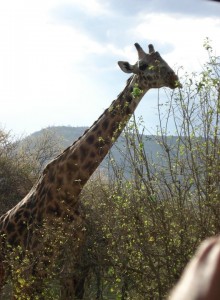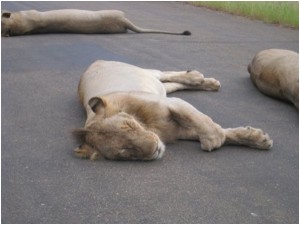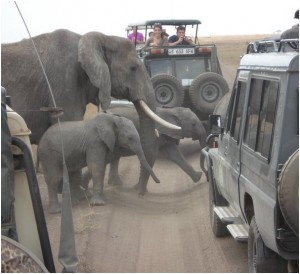40 things to do before you’re 40 – Number 20!
Tuesday, June 25th, 201320. See Africa's 'Big Five'
“The only man I envy is the man who has not yet been to Africa - for he has so much to look forward to.” - Rich Mullins
So much has already been said of the powerful effect Africa has on a traveller’s psyche that it’s difficult to write anything without repeating the same clichés. Perhaps it’s the thought that the entire human race can trace their origins to this continent, or the vastness of the landscape which puts the significance (or more to the point, insignificance) of yourself into perspective. Whatever the reason, for almost everybody, a trip to Africa is an introspective and life-changing experience.
I come from Scotland where, if we had a ‘big five’, it would probably be squirrels, deer, badgers, otters, and voles. Sorry guys – you’re all lovely but you wouldn’t last long in Africa! The wildlife in Africa has evolved over millions of years to reflect the challenges of life in a continent with intense heat, a lack of water and vegetation, and most crucially - other extremely dangerous animals to protect themselves from. This has created, over millions of years, the most amazing animals on earth.
There’s no better way to immerse yourself in the astoundingly diverse wildlife of this continent than taking a safari through its national parks. Safari comes from the Swahili word for ‘journey’, and will take you deep into the natural habitat of the ‘big five’. This refers to the rhino, elephant, leopard, lion and Cape buffalo. The phrase was originally coined by big game hunters decades ago to refer to the difficulty in hunting these massive creatures on foot, but now, with huge efforts to conserve and protect these animals, it is more commonly used by safari tour operators to refer to five of the most incredible animals to spot in the wild. Africa overflows with a diversity of life and many other animals, such as the baboon, cheetah or giraffe, could easily be named on your own ‘big five’ list.
Some amazing facts about the ‘big five’ –
Lions –
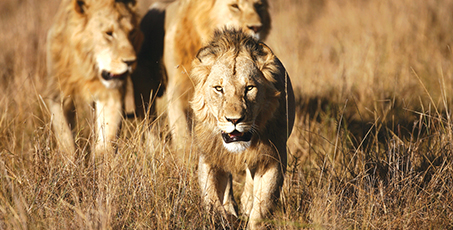
- A lion’s roar can be heard up to 5 miles away.
- The lion is the only member of the cat family with a tasselled tail, which is often used to signal to other members of the pride. Messages range from directional "this way" commands to flirtatious "come hither" invitations!
- A lion's claws are not only very sharp, but also retractable, which helps maintain the big cat’s slice-and-dice capabilities by preventing injury during play.
Leopards –

- Leopards can drag prey weighing up to three times their own body weight up into trees over 20 feet (6 metres) tall!
- They have amazing hearing. Leopards can pick up five times more sounds than humans can.
- Leopards don't need to drink much water - they can live off the moisture in their prey.
Elephants –
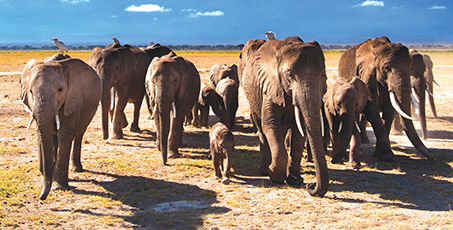
- Baby elephants are born blind and some individuals suck their trunks for comfort, similar to the way young humans suck their thumbs.
- African elephants are the largest land mammals on the planet, and the females of this species undergo the longest pregnancy - 22 months.
Rhinos –
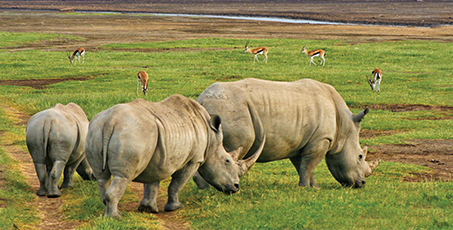
- Black rhinos can pick up small objects and even open gates and vehicle doors with their upper lips.
- The rhino's horn is made of keratin - like human fingernails and hair.
- The world's rhino population has decreased 90% since 1970 due to hunting.
Buffalos -
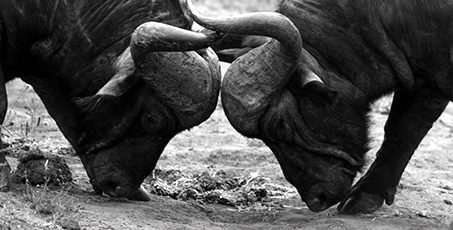
- Buffalo are said to have killed more hunters in Africa than any other wild animal.
- Buffalos have fantastic memories and are known to ambush hunters that have harmed them in the past.
- Cape buffalo are known to kill lions, and can seek out and kill lion cubs as preventative punishment.
Check this out - quite simply one of the most amazing videos of all time! This shows an epic battle between cape buffalos, lions, and crocodiles at Kruger National Park in South Africa: www.youtube.com/watch?v=LU8DDYz68kM
To visit Kruger and other incredible African national parks with Topdeck, check out our superb range of African safari trips - www.topdeck.travel/africa/safari-tours
